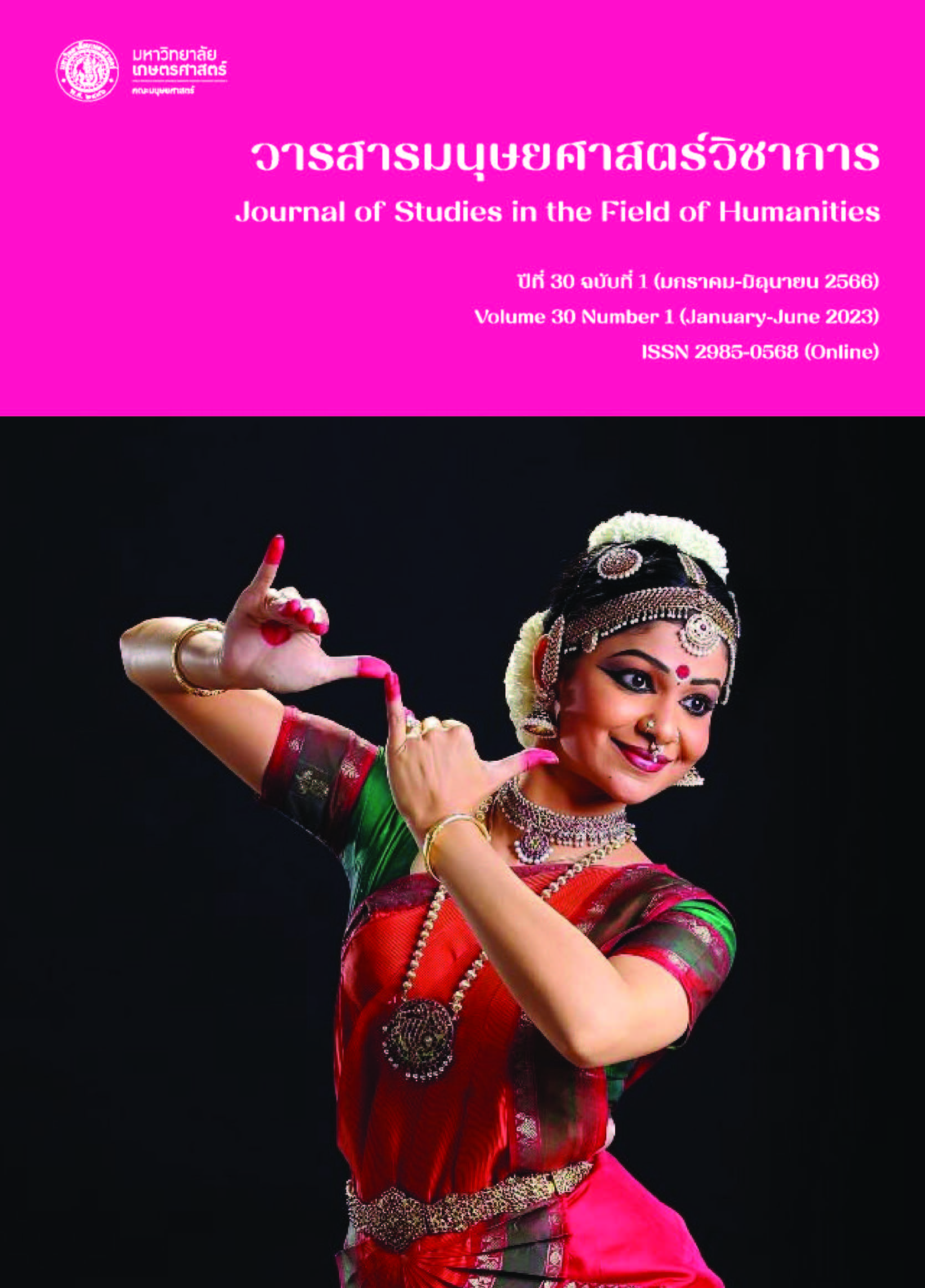“ทศชาดก” ของพระยาปริยัติธรรมธาดา (แพ ตาละลักษมณ์): วรรณคดีสองประสงค์
Main Article Content
บทคัดย่อ
ทศชาดก ของพระยาปริยัติธรรมธาดา (แพ ตาละลักษมณ์) เป็นวรรณคดีสมัยรัชกาลที่ 5 เรื่องหนึ่งที่ผู้แต่งสามารถนำเรื่องทศชาติชาดกมาปรับแปลงให้เป็นวรรณกรรมสอนพุทธศาสนาสำหรับกุลบุตรและหนังสือฝึกอ่านภาษาไทยได้ตรงตามวัตถุประสงค์ของกวี ในมิติวรรณกรรมสอนพุทธศาสนาสำหรับกุลบุตร พระยาปริยัติธรรมธาดา (แพ ตาละลักษมณ์) ใช้กลวิธีอันหลากหลายปรับแปลงเรื่องทศชาติในอรรถกถามหานิบาตให้เหมาะสมกับวัยของผู้อ่าน ไม่ว่าจะเป็นการปรับโครงสร้างของอรรถกถาชาดกให้เป็นนิทานที่เด็กเข้าใจง่าย การปรับเนื้อหาให้กระชับ การรักษารายละเอียดสำคัญในชาดกบางเรื่องที่มีเนื้อความเหมาะสมกับผู้เรียน การนำเสนอแนวคิดที่เป็นคุณธรรมพื้นฐานแทนแนวคิดเรื่องบารมี และการแทรกคำสอนที่เหมาะสมกับผู้เรียน ส่วนมิติของหนังสือฝึกอ่านภาษาไทย ผู้ประพันธ์ใช้หลายกลวิธีในการปรับแปลงทศชาติชาดกให้เป็นบทฝึกอ่านสำหรับเด็ก ทั้งการใช้กาพย์ 3 ชนิด ได้แก่ กาพย์ยานี 11 กาพย์สุรางคนางค์ 28 และกาพย์ฉบัง 16 นำเสนอเนื้อหาตามขนบการแต่งกลอนสวด การดำเนินเรื่องด้วยพระชาติทั้ง 10 ของพระโพธิสัตว์ควบคู่ไปกับการแจกลูกศัพท์ในมาตราต่างๆ การสอนให้ผู้เรียนรู้จักคำศัพท์ที่หลากหลาย รวมถึงการเพิ่มสัมผัสพยัญชนะและสัมผัสสระภายในวรรคเพื่อให้จดจำได้ง่าย เรื่องทศชาดกจึงเป็นทศชาติอีกสำนวนหนึ่งของคนไทยที่แสดงถึงการนำเรื่องราวของพระโพธิสัตว์ในสิบพระชาติสุดท้ายมาสืบทอดและสร้างสรรค์ใหม่ด้วยกลวิธีอันชาญฉลาดของกวี
Article Details

อนุญาตภายใต้เงื่อนไข Creative Commons Attribution-NonCommercial-NoDerivatives 4.0 International License.
เอกสารอ้างอิง
ณัฐกาญจน์ นาคนวล. (2559). เรื่องเล่าทศชาติชาดก: การสืบทอดในสังคมร่วมสมัย
(วิทยานิพนธ์ดุษฎีบัณฑิต สาขาวิชาภาษาไทย). จุฬาลงกรณ์มหาวิทยาลัย, กรุงเทพฯ.
นิยะดา เหล่าสุนทร และคณะ. (2543). ภูมิปัญญาของคนไทย: ศึกษาจากแบบเรียนภาษาไทยและตำราพิไชยสงคราม. กรุงเทพฯ: คลังนานาวิทยา.
เนียนศิริ ตาละลักษณ์. (2525). ทศชาดกกลอนสวด. ศิลปากร, 26(4), 43-50.
ปริยัติธรรมธาดา (แพ ตาละลักษมณ์), พระยา. (2502). ทศชาดก (เรื่องพระเจ้า 10 ชาติ์) ลำนำกลอนสวด. พระนคร: กรมแผนที่ทหารบก.
ปริยัติธรรมธาดา (แพ ตาละลักษมณ์), พระยา. (2515). โบราณศึกษาและวิธีการสอนหนังสือไทย (พิมพ์ครั้งที่ 3). พระนคร: สามมิตร.
พัฒน์ เพ็งผลา. (2530). ชาดกกับวรรณกรรมไทย (พิมพ์ครั้งที่ 2). กรุงเทพฯ: มหาวิทยาลัยรามคำแหง.
มหามกุฏราชวิทยาลัย. (2562ก). พระไตรปิฎกและอรรถกถาแปล พระสุตตันตปิฎก ขุททกนิกาย ชาดก ภาคที่ 2 เล่ม 2 (พิมพ์ครั้งที่ 14). นครปฐม: มหามกุฏราชวิทยาลัย.
มหามกุฏราชวิทยาลัย. (2562ข). พระไตรปิฎกและอรรถกถาแปล พระสุตตันตปิฎก ขุททกนิกาย ชาดก ภาคที่ 2 เล่ม 3 (พิมพ์ครั้งที่ 14). นครปฐม: มหามกุฏราชวิทยาลัย.
อาทิตย์ ชีรวณิชย์กุล. (2559). วิถีโลก-วิถีโพธิสัตว์/ พุทธศาสนา-มิจฉาวาทะ: ถกเถียงเรื่องคุณค่าในทศชาติชาดก. ใน สุรเดช โชติอุดมพันธ์ (บ.ก.), ถกเถียงเรื่องคุณค่า (น. 223-268). กรุงเทพฯ: วิภาษา.
โอฬาร รัตนภักดี. (2547). การศึกษาวรรณกรรมประเภทบทฝึกอ่านของไทย (วิทยานิพนธ์มหาบัณฑิต สาขาวิชาภาษาไทย). มหาวิทยาลัยศิลปากร, นครปฐม.


